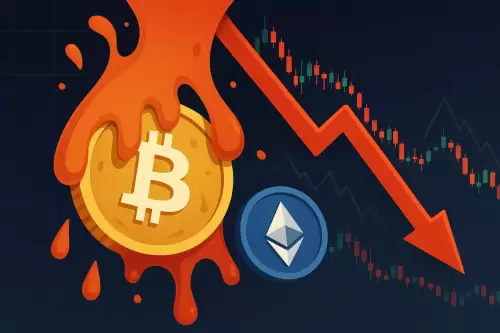 |
|
 |
|
 |
|
 |
|
 |
|
 |
|
 |
|
 |
|
 |
|
 |
|
 |
|
 |
|
 |
|
 |
|
 |
|
Cryptocurrency News Articles
Introducing Bitcoin Solaris: The Scalable Blockchain Designed to Untether Decentralized Systems from Performance Bottlenecks
May 11, 2025 at 05:00 pm
Bitcoin changed the world by introducing digital scarcity and decentralized consensus. But its architecture, designed for security and simplicity, was never intended to scale for millions of daily transactions.

In the annals of technological innovation, few inventions have sparked as much interest and debate as Bitcoin. Introduced in 2008 amidst the throes of the financial crisis, Bitcoin was conceived as a decentralized digital currency, aiming to provide an alternative to fiat currencies and the institutions that control them.
Bitcoin's introduction was groundbreaking. It brought forth the concepts of digital scarcity, decentralized consensus, and a blockchain-based system for recording and verifying transactions. This technology, powered by cryptography and peer-to-peer networking, promised a new era of financial inclusion and autonomy.
However, Bitcoin's architecture, designed for security and simplicity, was never intended to scale for millions of daily transactions. With a maximum throughput of around seven transactions per second (TPS), Bitcoin could certainly secure a store of value — but it struggled to function optimally as a transactional network in the fast-paced modern economy.
Enter Bitcoin Solaris, a blockchain designed to address the performance bottlenecks of early blockchain systems and expand the use cases for decentralized systems while maintaining verifiability, security, and decentralization.
Why Bitcoin Can’t Scale Alone
Bitcoin's base-layer limitations are well known. Its block size and 10-minute block interval restrict how many transactions it can handle per second. That design serves a purpose: security through simplicity. But in a world where users expect instant transfers, app responsiveness, and real-time smart contract interactions, Bitcoin's architecture falls short.
Solutions like the Lightning Network offer off-chain scaling but add complexity and require user coordination. For many, it’s a workaround — not a foundational fix.
Bitcoin Solaris takes a foundational approach to scalability. It introduces a dual-layer blockchain system, where throughput and consensus are decoupled into separate environments:
• The Helios Chain focuses on high-frequency transactions, handling up to 10,000 TPS in a decentralized manner. This layer is designed for transactional efficiency and can be scaled to meet evolving demand.
• The Bitcoin Solaris Chain serves as the primary PoW chain, focused on security and finality. It acts as the root chain for the Helios Chain, ensuring the integrity of all transactions.
Together, these layers function as an integrated ecosystem. Rather than cramming all operations into one chain or outsourcing to Layer-2s, Bitcoin Solaris scales from the inside out. This native design enables consistent two-second finality and high-frequency capacity well beyond that of legacy blockchains.
Helios Consensus: Hybrid by Design
The engine powering this architecture is the Helios Consensus Mechanism (HCM)—a hybrid protocol designed to synchronize decentralization with performance. Helios combines four mechanisms:
• Parallel PoS: This allows for high-frequency transaction processing in a decentralized manner, handling up to 10,000 TPS.
• PoW-based finality: Every Helios block is attached to the Bitcoin Solaris Chain via a PoW-based snapshot, ensuring transaction finality within two seconds.
• Liquid staking: Users can stake their tokens to participate in consensus and earn rewards, while still retaining the liquidity of their tokens.
• A multi-token economic model: This promotes a balanced and sustainable ecosystem.
The result is a system that avoids the energy waste of Proof-of-Work, delivers higher throughput than traditional PoS chains, and supports network growth without degrading speed or raising fees.
From Seven Transactions to Real-Time Utility
To put 10,000 TPS into perspective, consider real-world applications. At seven TPS, Bitcoin can barely support a single mid-size retail chain. Bitcoin Solaris, at 10,000 TPS, can accommodate:
• 500 million users making one transaction per day.
• All major bank card transactions.
• The world's largest e-commerce platforms.
And it does so natively — without bridges, batching, or dependency on external solutions. For a full comparison of transaction speed and network design between Bitcoin and Bitcoin Solaris, watch Crypto Volt's analysis.
Token Supply and Presale Access
Bitcoin Solaris follows the same capped model as Bitcoin: 21 million BTC-S tokens will ever exist. But its distribution model is designed to be more accessible. A total of 4.2 million tokens (20%) are allocated to the presale, now in Phase 2 at 2 USDT per token.
The next phase will raise the price to 3 USDT. Early supporters can gain exposure ahead of the Nova App launch and exchange listings, with no tiers, auctions, or staking lockups.
And one more thing: Bitcoin Solaris's infrastructure has been fully audited by independent firms and includes full identity verification for transparency:
• All token logic, staking behavior, and miner rewards are viewable on-chain.
Bitcoin introduced the foundation. But Bitcoin Solaris builds the structure needed for modern blockchain use. With 10,000 TPS, instant finality, and native dual-layer execution, it doesn'
Disclaimer:info@kdj.com
The information provided is not trading advice. kdj.com does not assume any responsibility for any investments made based on the information provided in this article. Cryptocurrencies are highly volatile and it is highly recommended that you invest with caution after thorough research!
If you believe that the content used on this website infringes your copyright, please contact us immediately (info@kdj.com) and we will delete it promptly.






























































